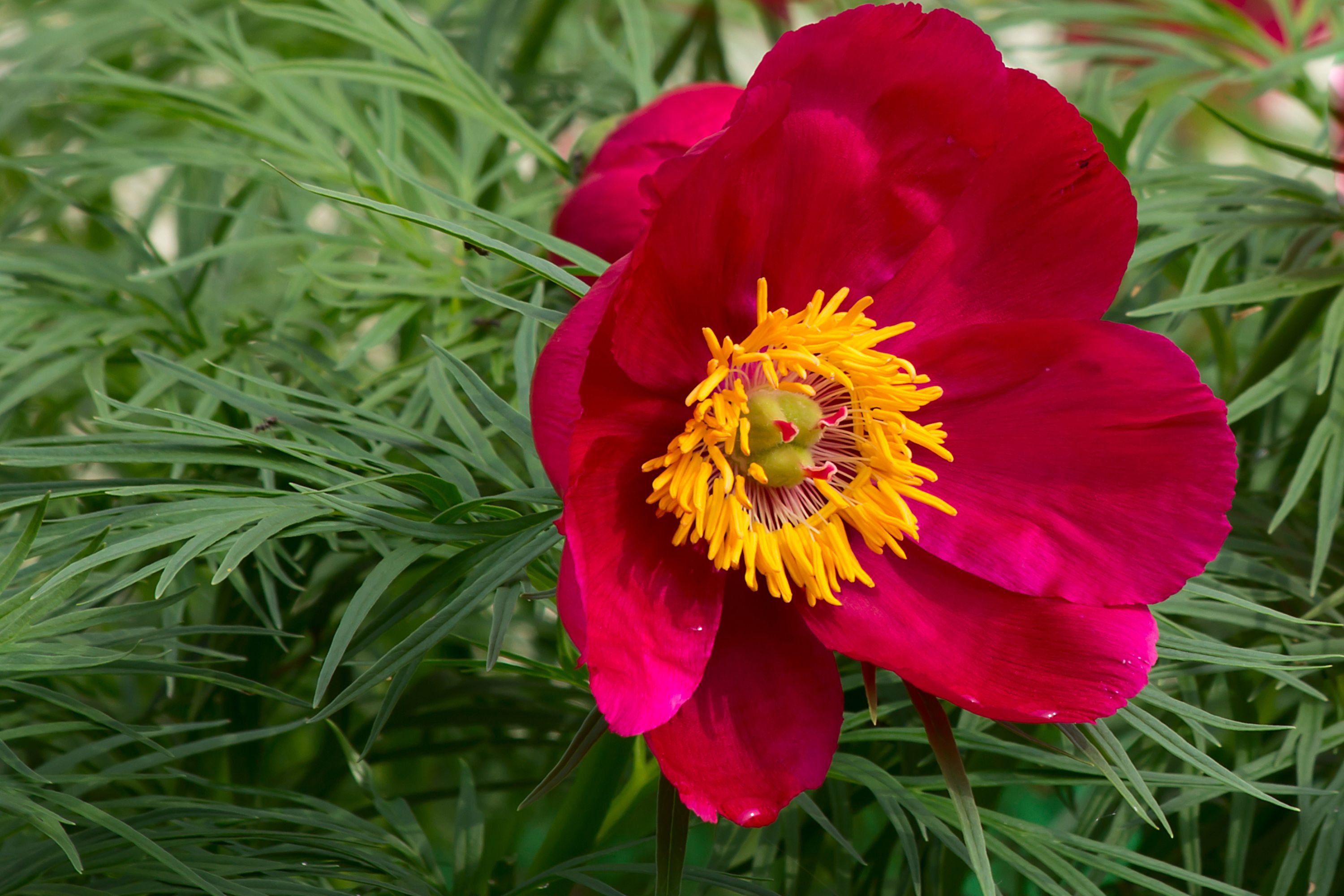Fern leaf peony
(Paeonia tenuifolia)

Description
Paeonia tenuifolia is a herbaceous species of peony that is sometimes called the fern leaf peony. It is native to the Caucasus Mountains of Russia and the Black Sea coast of Ukraine, spreading westward into Bulgaria, Romania and Serbia and eastward to northwestern Kazakhstan. It was described by Linnaeus in 1759. The leaves are finely divided into almost thread-like segments and grow close together on the stems. This peony can reach 30–60 cm (12–24 in) in height. The scented red flowers have numerous yellow stamens in the centre Paeonia tenuifolia is a hairless herbaceous perennial plant with a stem of 30–60 cm high, which is densely set with alternately arranged compound leaves. The lowest leaves are twice compounded or the leaflets are deeply divided into many fine linear segments, ½-6 mm wide, with a blunt to rounded tip, dark green above, and lighter glaucous green below. The usually single flower on each stem seems to be floating on the foliage. The flower is 6–8 cm across, cup-shaped, with deep crimson, long inverted egg-shaped petals, with a rounded or blunt top. The stamens are 1½—2 cm long, with yellow filaments, anthers and pollen. There are usually three, sometimes two, coarse felty haired carpels, that will eventually develop into 2 cm long, dry, dehiscent fruits called follicles. This species is diploid with ten chromosomes (2n=10). Paeonia tenuifolia was first described by Linnaeus in the 10th edition of his Systema naturae of 1759. Franz Josef Ruprecht distinguished it from P. biebersteiniana, which was based on a specimen from Stavropol, in the Flora Caucasi, that was published in 1869. Opinions seem to have been divided as Lomakin only mentions P. tenuifolia in 1897, while two years later Lipsky separated the two species again, along with Nikolai Schipczinsky in 1937. Ketzchoweli described in 1959 P. carthalinica from Igoeti, Georgia and thought it to be very closely related to P. tenuifolia, though having broader leaflets and greyish felty hairs on the carpels and follicles. Kemularia-Nathadze, who revised the genus Paeonia in 1961, considered these two might be synonymous. In 2003, Hong and Zhou found the characters that were used to distinguish between all three taxa occurred in any combination and intergraded. Even within one population, plants typical fitting to either of the original descriptions occurred together.
Taxonomic tree:







